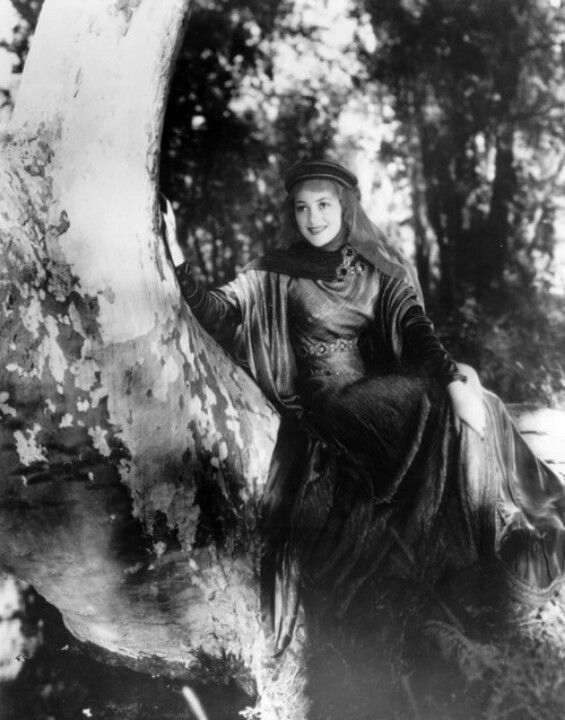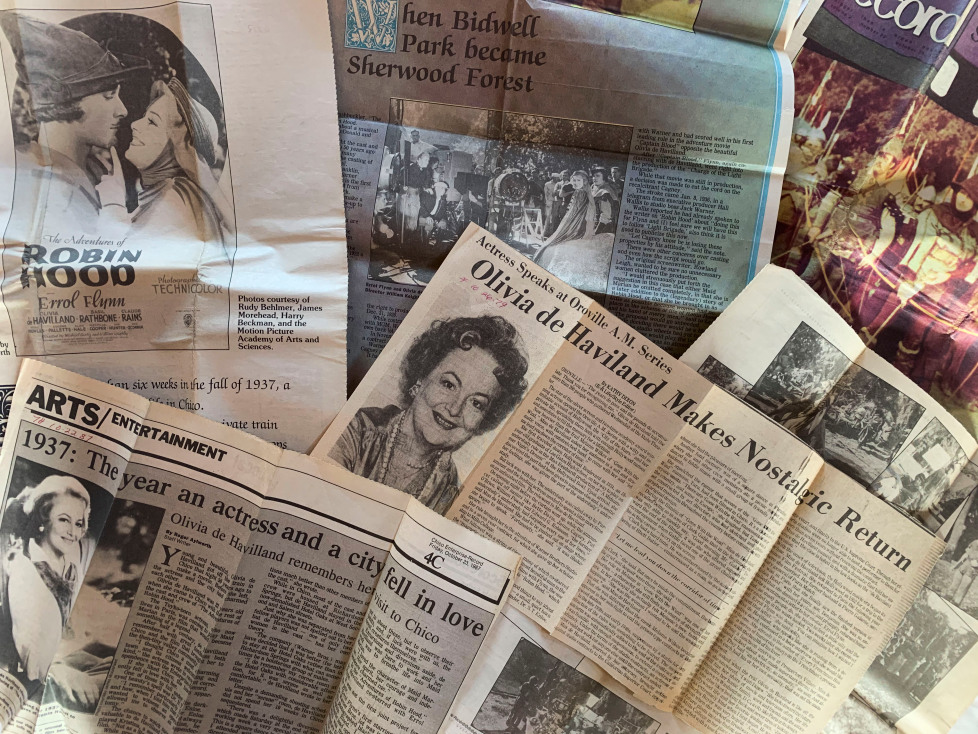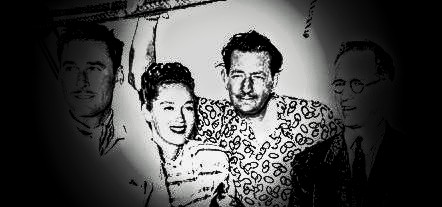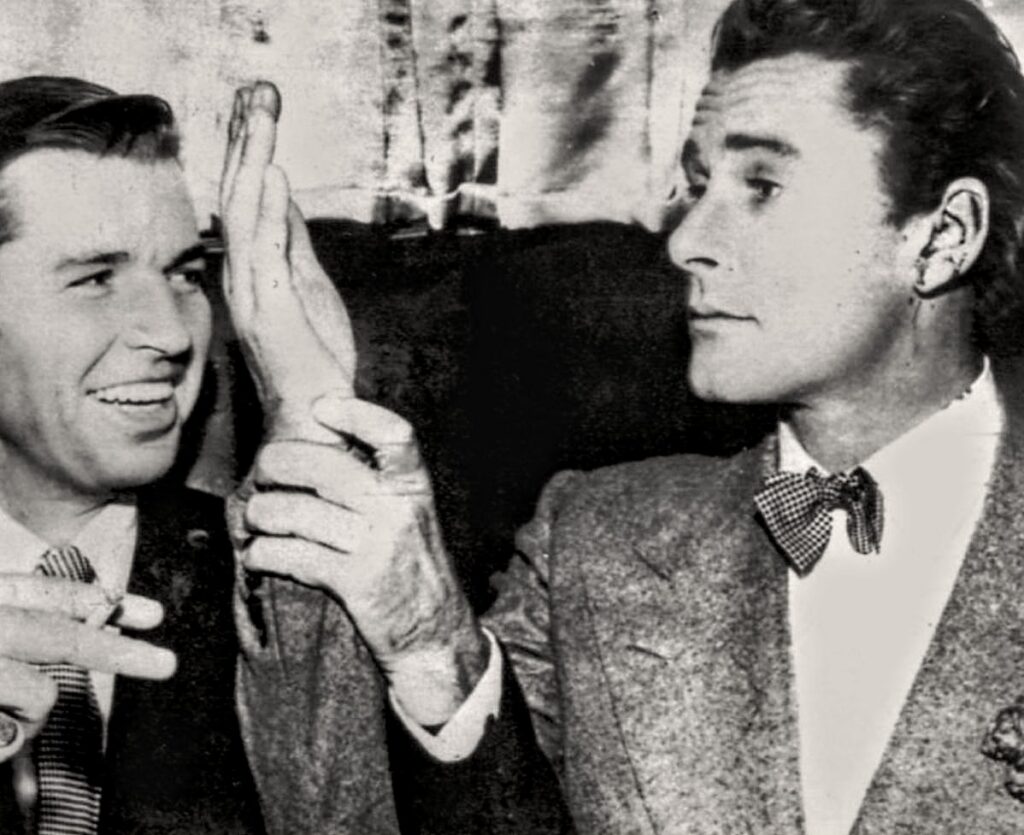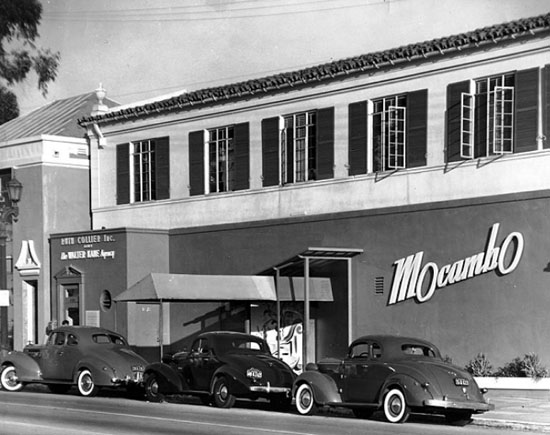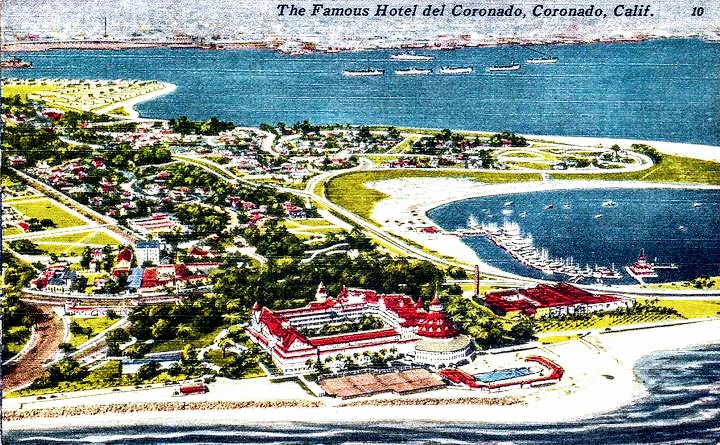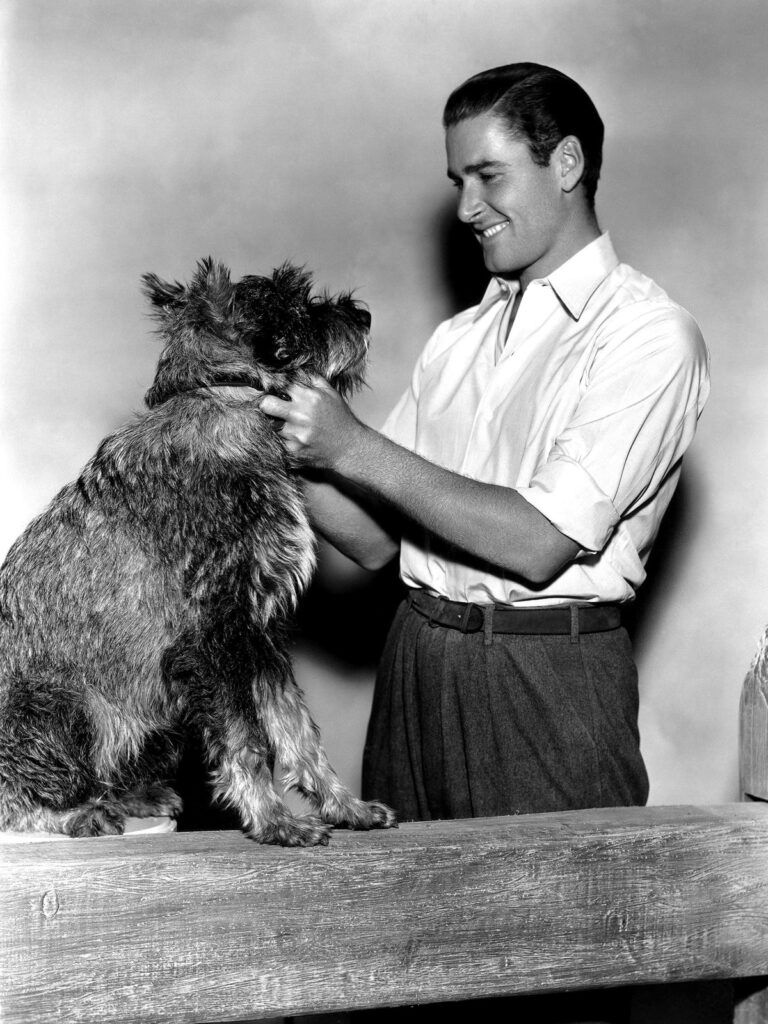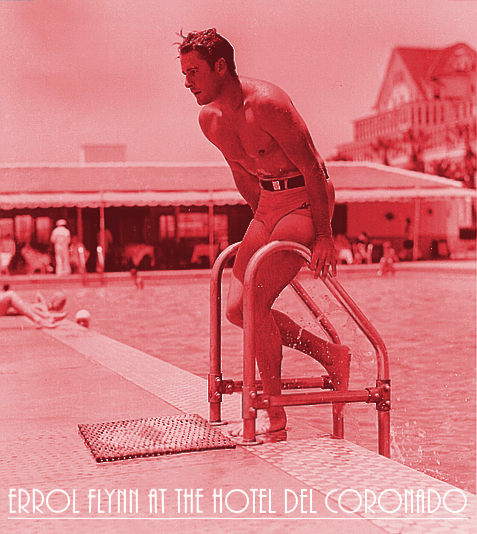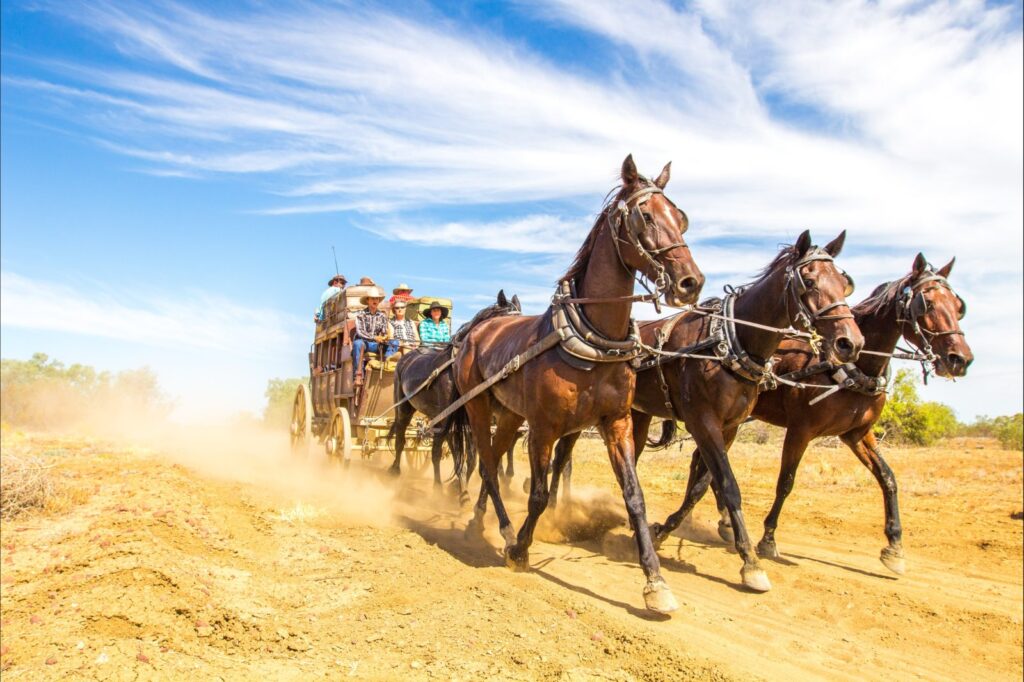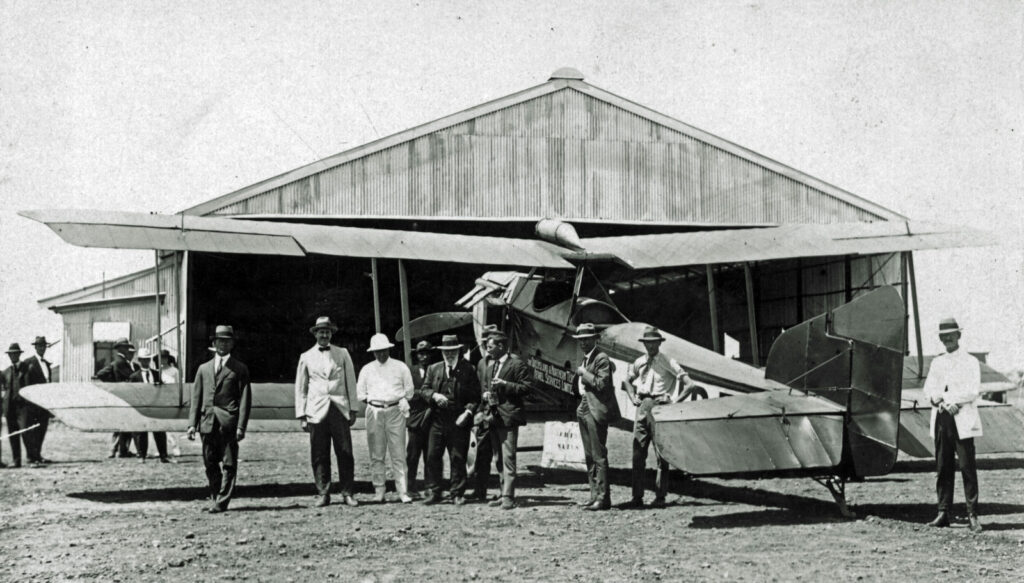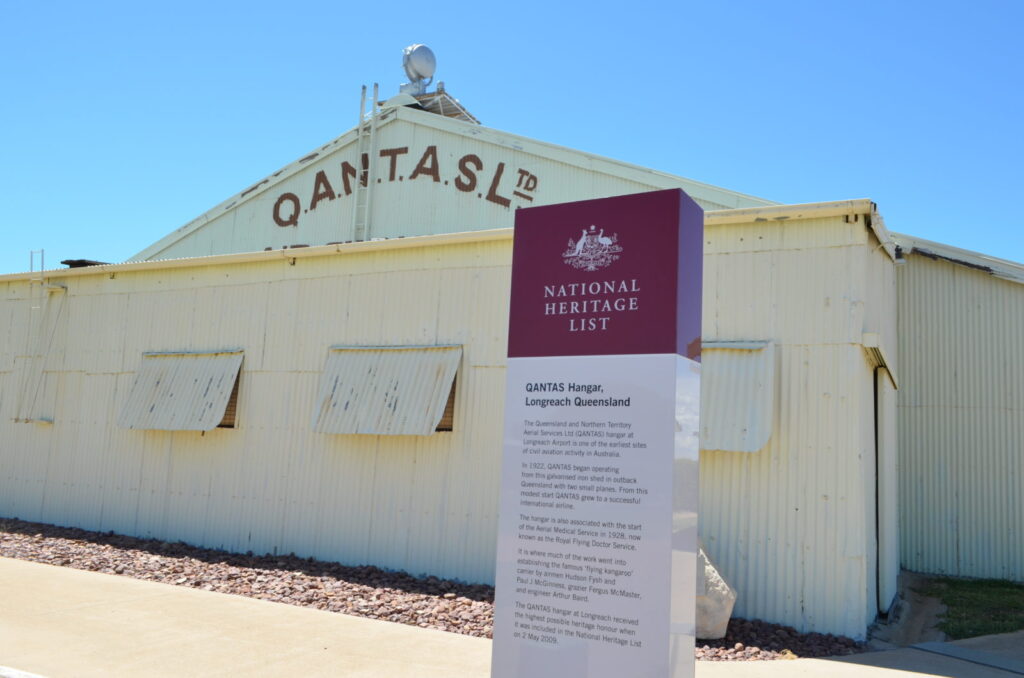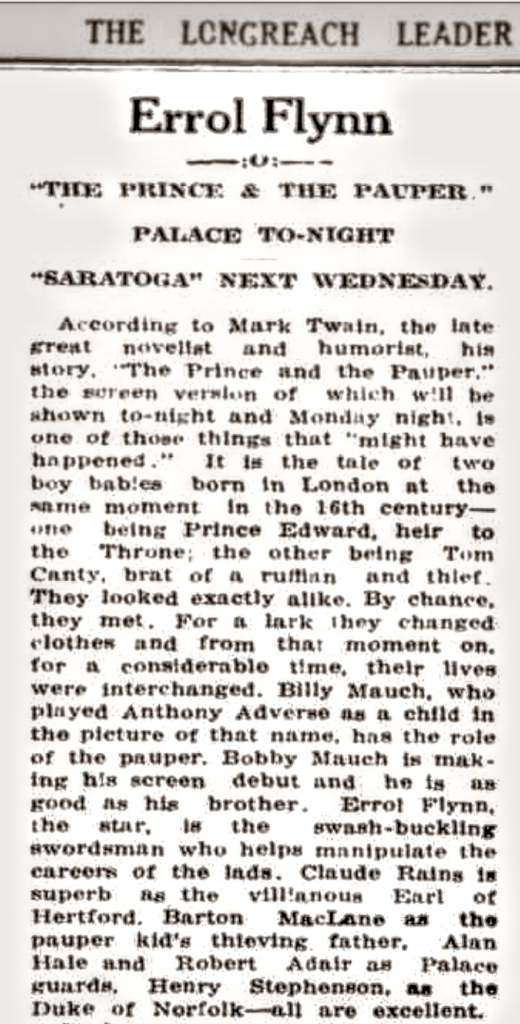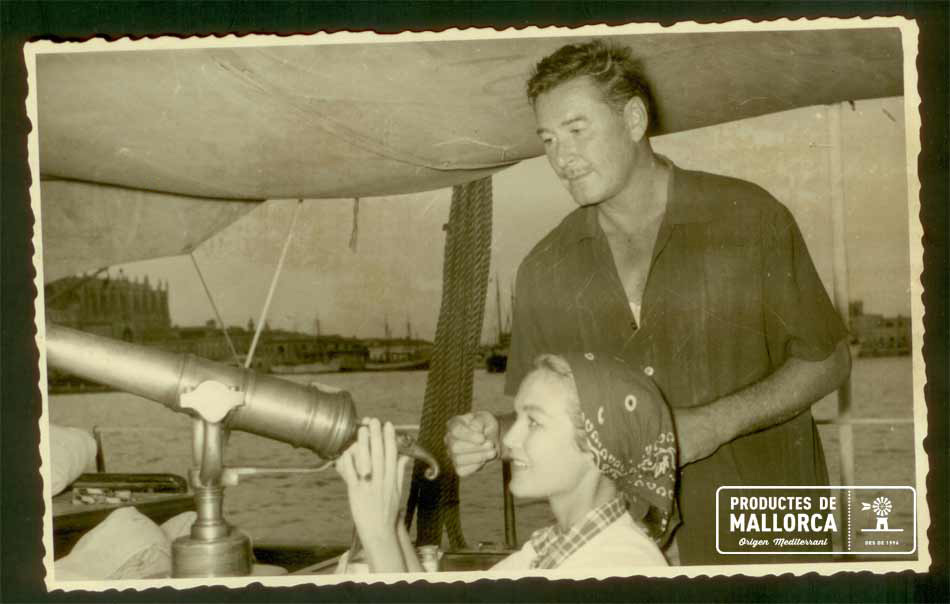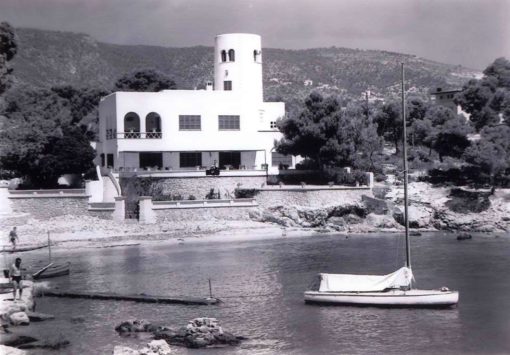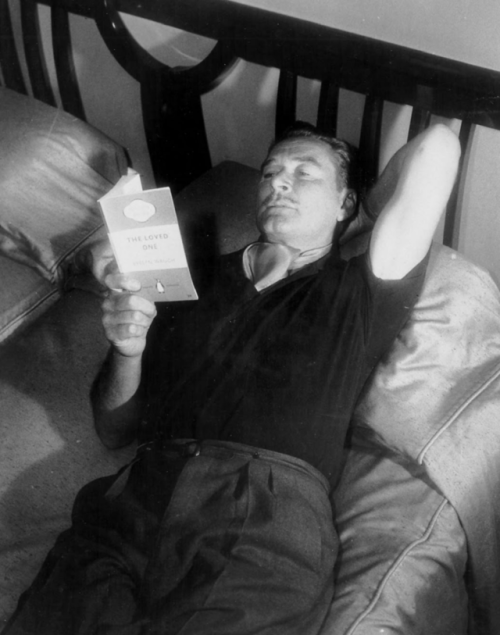Today is Wednesday, October 14, the day Errol Flynn left the world … We remember and love our dear ol’ Errol …
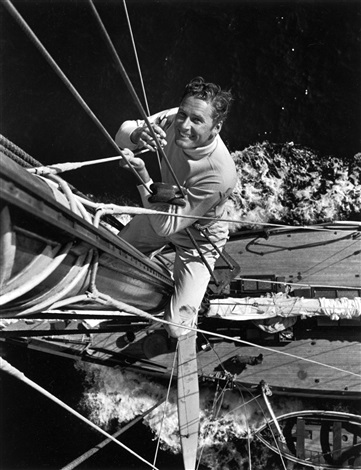
June 20, 1909 – October 14, 1959
The original first posting I wrote on this blog: Published February 4, 2007
Who was Errol Flynn?
He it was who fought the evil-doers up there on the big screen when I was a kid growing up along the banks of the Snohomish River circa 1959. I was ten years old when the great swashbuckler died, and clearly remember the day he died because I distinctly recall saying aloud… Oh, I liked him! when I saw his picture in my father’s newspaper and read that he had died in Vancouver, B.C. the day before. Vancouver was in British Columbia, Canada–less than two hours drive north from where we lived in a little logging community that surrounded a tiny lumber mill resting on the edge of the Snohomish River, near Everett, Washington. Not far to the south was the big city of Seattle–farther south, somewhere, was Hollywood where Flynn lived, I thought then…
All Movie Stars lived in Hollywood, I thought.
Where else would they live?
As a ten year old kid, my friends and I would play Robin Hood in the marsh between our houses. This area was about an acre of tall grass with a layer of mud and water under it. In the center of it was a tall tree with willowy branches. Nearby this tree was a cement block that was part of the foundation of a house or building long vanished from sight.
This cement block was a perfect place to swing on a rope from the tree, and land Flynn-like on the cement block, saying loudly “…Welcome to Sherwood, Milady!” as the other kids stood watching.
We created bows and arrows from tree branches (long bows) and shot at cardboard targets in a Tournament–and went about robbing the rich to give to the poor…
There were terrific battles between the Normans and the Saxons–in cardboard armor. We had long stick swords with handles that consisted of a short block of wood nailed across the end of the stick where are hands took up these sharply pointed “swords”. It is amazing that nobody lost an eye or was impaled when we whacked each other’s cardboard armor to pieces but we all survived major injury.
It was disconcerting, however, to see the pointed end of a stick come tearing through your head armor (a small cardboard box with eye slits cut in it) and see the sharp tip whiz past your face… We were the Merry Men of Sherwood until dark and our Mothers called out our names to come home for dinner.
The day I read of Errol Flynn’s death in my Dad’s evening newspaper was a sad one for me and for the Men of Sherwood. But soon, I forgot all about him–and moved on to other childhood adventures. We built a two-by-four wide bridge across the swamp from the cement block to the edge of the sawdust pile–a distance of about a half block, for example. It was rickety, held up by posts driven into the soft swamp ground. We scavenged everything we needed from the sawmill nearby. It had tons of discarded stuff to use for our scientific and engineering feats.
The days moved by quickly during those hot summer days of 1959–we climbed the Willow tree, and jumped off–catching branches to break our fall into the swamp’s knee high muck. We sent expeditions into the surrounding swamp of green scrub, sticker bushes, and thick-limbed trees to bring back scientific samples of flora and fauna. This was Stink Weed and Dandelions, and all manner of growing weeds. We boiled this up in Terry Sullivan’s mother’s pressure cooker in their kitchen and went out to play on the rooftop of the Sullivan’s garage. When we heard the explosion, it was nearly dark and Terry’s parents weren’t home, yet…
The mess was all over the kitchen walls, and their kitchen stank for a week. We got a real hiding for that one!
Other days were spent riding our bicycles round the two roads that came down into the Mill area–my brother never could stop that heavy framed bike with its oversized tires, so he just crashed into the grass or alongside Dad’s car–or time was spent making tree houses. We had crewcuts in summer, collected bubble gum cards and seven up bottlecaps (to go to the movies when you turned them in) and wore blue jeans all the time with a t-shirt. You could put a playing card held with a wooden clothesline clip onto the wheel of your bike to make it sound like a motorcycle as the card fanned against the spokes!
TV was a little black-and-white set with an arial on the roof of the house. There may have been seven channels including the Canadian channels. Sundays, it seems to me, there were sci-fi movies like the BLOB with Steve McQueen in a starring role. And there were Errol Flynn movies like Robin Hood, The Charge of the Light Brigade, and Dodge City. Red Skeleton was on, and Milton Berle…
I remember seeing Errol on The Red Skeleton Show. He played a bum and held up the remains of his yacht–a porthole!
Errol had a huge effect on young boys of my generation. He was the swashbuckling hero we all wanted to be! He sailed the Seas, he found Adventure and Treasure, and love–that part we could do without. He was always kissing GIRLS!
But he sure could swordfight! He could shoot arrow-after-arrow like you’d pull the trigger on a gun! And every one found its mark!
As the years passed I forgot about Errol Flynn.
I was in my twenties before he became interesting to me again. I had been reading some biographies of various people–adventurous people like Jack London, Frank Buck, Robb White, and Martin & Osa Johnson. Hemingway fascinated me. It was while reading about Hemingway that Errol’s name came up. Errol Flynn! There was a reference to something Flynn said in a book called “My Wicked, Wicked Ways”. I wonder if I could find that book anywhere, I thought.
It turned out that it was still very much in print and there was a paperback copy of it at my local bookstore. Then began some of best reading I have ever come across in an autobiography. This story had it all… intrigue, mystery, adventure, laughs, tears… and it was all true!
Wasn’t it?
Well… What wasn’t true made a hellova story, and what was true was not always just a colorful story. You might read “My Wicked, Wicked Ways” as a terrific novel–or a tall tale, yet, here is a legendary character that captures the spirit of adventure in the hearts of all young people who share the feelings of a young man who takes on more than he can chew at times but has his fill nonetheless of what life has to offer… he drank his fill both literally and figuratively of everything most others only dreamed of or read about in glossy magazines. He was kind, cruel–generous, mean, unpredictable, tormented, creative, foolish, brave, gullible, and had a genius for living larger than life. He was intelligent, self-educated–a businesman, an internationally recognised actor, a writer, an explorer, a raconteur, a drunk, an addict. His life was a Shakespearean drama…
He was a lot of things to many people and he was less to himself than should have been. He was and is the quintessential bad boy–but he wasn’t nearly as wicked as he was thought to be by those who didn’t understand him, or those who envied him. He was dangerous. He was cultured, he was a joker, he was… curious.
He was a scientist, of sorts… that is, he knew the real world and wanted to understand it. To experience it. All of it.
And for nearly fifty years, he did.
— David DeWitt
